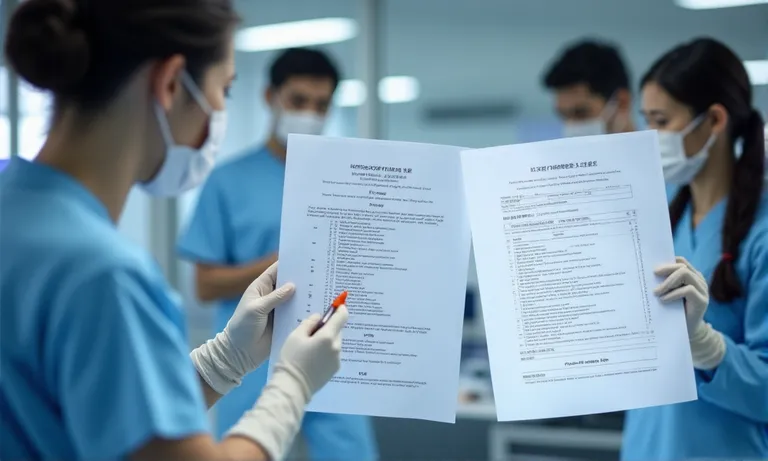Outsourcing crown and bridge work can improve efficiency, reduce cost, and expand capacity—but it’s not a one-size-fits-all solution. For some dental practices or labs, structural limitations, workflow conflicts, or misaligned expectations may turn outsourcing from a strategic asset into a hidden liability.
Before committing to external partnerships, decision-makers should evaluate five critical fit dimensions:
- Operational Readiness: Are your digital workflows, documentation protocols, and case volume patterns stable enough to sync with a remote lab?
- Communication Compatibility: Could language barriers, incomplete records, or time zone gaps cause delays in case turnaround?
- Quality Alignment: Do your internal QA expectations or customization needs exceed what an external lab can consistently deliver?
- Business Model Fit: Are your orders too irregular, urgent, or low in volume to benefit from offshore workflows?
- Expectation Management: Are assumptions around cost savings, SLA clarity, and regulatory alignment grounded in operational reality?
A clear-eyed assessment of these areas helps determine whether outsourcing will drive measurable ROI—or introduce unnecessary friction. As an overseas dental lab, Raytops Dental Lab supports partners with structured coordination and digital alignment—but fit comes first.
What Operational Challenges Make Outsourcing Inefficient?
Outsourcing crown and bridge work isn’t always a productivity win. When internal operations lack the structure to support remote workflows, outsourcing can introduce more delays than savings. Labs depend on predictable inputs—uncertain case volume, incompatible file formats, or non-digital records can slow turnaround, raise remake risk, and frustrate collaboration.

dental-lab-outsourcing-operational-barriers
When does inconsistent case volume affect outsourcing logistics?
- Small or irregular case batches can’t fill shipment quotas, increasing per-case costs
- Labs struggle to plan technician allocation for unpredictable volume surges
- Infrequent submissions lead to re-learning cycles, especially for complex cases
One independent practice we supported had no fixed case schedule. As a result, every new crown case felt like a “first time,” causing confusion and delays. After co-developing a bi-weekly submission rhythm, both delivery time and remake rate dropped by 23%.
How does a lack of digital infrastructure limit lab collaboration?
- No intraoral scanner means physical impression shipping—adding 2–5 days of transit
- Outdated design software may be incompatible with CAD/CAM systems at the lab
- Missing STL file checks can let early-stage errors pass through undetected
A lab’s digital readiness only delivers value if the clinic’s tools can integrate with it. Clinics without scanning capability or digital order portals may face significant bottlenecks.
Why are some internal workflows incompatible with remote production?
- Case details scattered across emails, PDFs, and handwritten forms increase error risk
- Lack of a central coordinator can delay responses and clarification
- Urgent cases sent without advance notice disrupt lab scheduling and stretch turnaround windows
Unless clinic workflows are mapped clearly and repeatable, outsourcing can create friction. As an overseas dental lab, we often observe that digital alignment and submission consistency are more predictive of outsourcing success than case volume alone.
What Communication Barriers Undermine Crown and Bridge Case Success?
Even the best lab can’t deliver consistent outcomes if the case instructions are unclear. Miscommunication is one of the most common—and costly—hidden risks in crown and bridge outsourcing.
From documentation gaps to language mismatches and misaligned time zones, small missteps often lead to remakes, patient dissatisfaction, or lost production time.

dental-case-communication-breakdown
What issues arise from unclear instructions or case documentation?
- Handwritten or incomplete forms often miss critical details like shade tab or margin marking
- Missing prep photos or opposing arch files can delay production or trigger rework
- Lack of annotation in STL uploads leaves interpretation to chance
A common misunderstanding we encounter is assuming a case submission “makes sense” to the lab just because it’s familiar to the clinic. Clarity is not universal—especially across borders.
How do time zone differences affect real-time coordination?
- A simple adjustment request sent late afternoon may not be seen until the next business day overseas
- Urgent remakes face 12–24 hour clarification lag unless teams pre-plan time zone alignment
- Without overlapping working hours, every follow-up adds a full day of delay
One DSO group we worked with initially used voice messages to communicate adjustments—but due to the 13-hour time difference and lack of visual references, the lab misunderstood critical points. Once we shifted to structured, image-annotated forms, remake rates fell by 18%.
Why does limited English proficiency lead to remakes or delays?
- Misinterpretation of case notes (e.g., “adjust distal contact” vs “tighten distal”) is common
- Lab technicians may misread informal shorthand or regional slang
- Even minor translation issues can lead to major fabrication mismatches
This is why structured forms, visual labels, and standardized terminology matter. As a collaborating overseas dental lab, Raytops Dental Lab uses bilingual templates and case checklists to minimize ambiguity and enhance instruction clarity.
When outsourcing, it’s not just about shipping models—it’s about transferring intention. Clear, consistent, visual, and language-adapted instructions build the foundation for outsourcing success.
When Do Quality Control Expectations Clash with Outsourcing Reality?
Outsourcing crown and bridge work makes financial sense—until it collides with clinical precision standards that remote partners can’t consistently match. When internal quality expectations are rigid and highly customized, outsourcing may introduce gaps that clinics can’t afford.
Even labs with strong reputations can struggle with hyper-specific preferences, leading to friction, remakes, or patient dissatisfaction.

dental-lab-quality-standards-ga
What happens if your internal standards exceed outsourced benchmarks?
- Highly detailed internal QC protocols (e.g., margin tolerance ≤50μm) may not be realistic for all labs
- If labs follow their baseline tolerances while clinics expect tighter specs, trust erodes
- Lack of aligned calibration tools can create false expectations of fit or finish
For example, one clinic expected cervical shade mapping and soft-tissue contouring in every anterior case, but the offshore lab had no predefined shade layering protocol. The result? Repeat refinements, wasted chair time, and frustration.
Are highly customized crown & bridge cases harder to replicate offshore?
- Cases involving special pontic design, screw-retained hybrids, or layered ceramic effects often require more back-and-forth
- Without prior calibration or guided templates, replication is inconsistent
- In-clinic modifications may become necessary—adding time and cost
Customization without collaboration leads to deviation. Unless labs are trained to your preferences with clear case guides, variation is inevitable.
Why is low tolerance for remakes a risk factor in outsourcing?
- Some clinics have zero-tolerance for fit errors due to patient type (e.g., high-end cosmetic or complex rehab)
- When one failed case damages a referral or patient trust, remake isn’t just a cost—it’s a reputational risk
- Labs with flexible remake policies can mitigate this—but not eliminate the root issue of misalignment
Outsourcing doesn’t mean lowering standards—but it does require aligning on what’s realistically achievable. As an overseas partner, Raytops Dental Lab often starts with a pilot run to test calibration, ensuring expectations and outputs converge before scaling up.
Outsourcing works best when both sides speak the same quality language. If your clinic can’t accept 5% deviation or needs full aesthetic layering on every molar—offshoring may not be your best-fit model.
What Business Models Are Not Suited for External Production?
Outsourcing crown and bridge work isn’t a fit for every dental business model. When order frequency is unpredictable or delivery timelines are unmovable, external production may create more stress than savings. Understanding when outsourcing adds friction—rather than efficiency—helps avoid workflow mismatches that compromise care.

dental-outsourcing-vs-chairside-speed
Why are one-off or urgent orders harder to outsource cost-effectively?
- International shipping makes same-day or 48-hour turnarounds unrealistic
- Labs prioritize bulk runs; single cases are harder to schedule efficiently
- High-speed local labs (chairside or regional) can outperform offshore labs on cost per hour in rush cases
A cosmetic clinic in Toronto previously outsourced anterior aesthetic crowns but faced delays due to customs clearance. After switching urgent work to a local lab for same-day temporaries, they used outsourcing only for standard posterior work—cutting total delivery stress by 40%.
When do tight delivery windows conflict with overseas lab schedules?
- Time zone misalignment can add a full day to back-and-forth clarification
- Friday dispatches from clinics may not be received until Monday processing in offshore labs
- National holidays (e.g., Golden Week, Lunar New Year) can cause multi-day production gaps
Without shared scheduling visibility, outsourcing introduces silent time loss. Strategic calendar alignment and realistic SLAs can mitigate—but not eliminate—this risk.
How do local chairside labs outperform outsourcing in ultra-fast cases?
- Chairside CAD/CAM enables same-day provisionals with no shipping lag
- In-house remakes or refinements take hours, not days
- For cases where patients travel, wait, or require immediate aesthetics, local is often more reliable
Outsourcing should be a tool—not a crutch. For high-speed practices or time-sensitive cases, blending chairside workflows with offshore partners for non-urgent cases creates better economic and clinical balance.
How Can Misaligned Expectations Lead to Outsourcing Failure?
Misaligned expectations are one of the most common reasons why outsourcing arrangements fall short of their promise. When assumptions about cost savings, quality benchmarks, or compliance requirements go unspoken or unverified, disappointment is inevitable.

crown-outsourcing-expectation-vs-reality
What common cost-saving assumptions often cause disappointment?
Outsourcing is often perceived as a guaranteed way to cut costs. But this overlooks the full cost-to-outcome equation. Lower per-unit pricing may be offset by higher remake rates, longer chair time, and hidden shipping fees. A clinic in Melbourne switched labs based on a 10% unit cost reduction, only to see remake-related losses climb 18% over six months. When evaluating labs, cost-saving must be paired with quality and process metrics.
Why are vague SLAs a red flag in outsourcing partnerships?
An SLA (Service Level Agreement) without clear metrics on turnaround, remake rates, communication timelines, and escalation procedures leaves too much to interpretation. Labs and clinics may define “acceptable” delays or defects differently. One DSO team we support revised their SLA to include bi-weekly case audits and structured feedback loops, which immediately reduced cycle-time variability by 30%. Clarity in expectations builds accountability.
What compliance or regulatory gaps may create legal exposure?
International outsourcing brings exposure to different regulatory environments—from patient data handling (HIPAA, GDPR) to materials documentation and labeling standards. A clinic working with an offshore lab that lacks proper documentation for CE or FDA compliance may inadvertently breach local laws. Procurement teams must include compliance verification in their onboarding and review cycles to prevent reputational or legal damage.
When expectations are clearly stated, documented, and measured, outsourcing partnerships flourish. But vague assumptions and silent misalignments turn cost-saving goals into operational risks.
Conclusion
Many clinics benefit from outsourcing crown and bridge work—but not all practices are structurally suited for it. When internal workflows, turnaround expectations, or compliance demands don’t align, outsourcing can become a bottleneck instead of a boost.
Understanding the limits of fit is just as important as identifying opportunities. As an overseas dental lab, we’ve seen that success comes when both sides have clear communication, compatible infrastructure, and realistic timelines. Outsourcing works best when it enhances—not replaces—operational precision.
For decision-makers, assessing fit early can prevent costly inefficiencies later. The best partnerships start not with promises, but with shared clarity.


